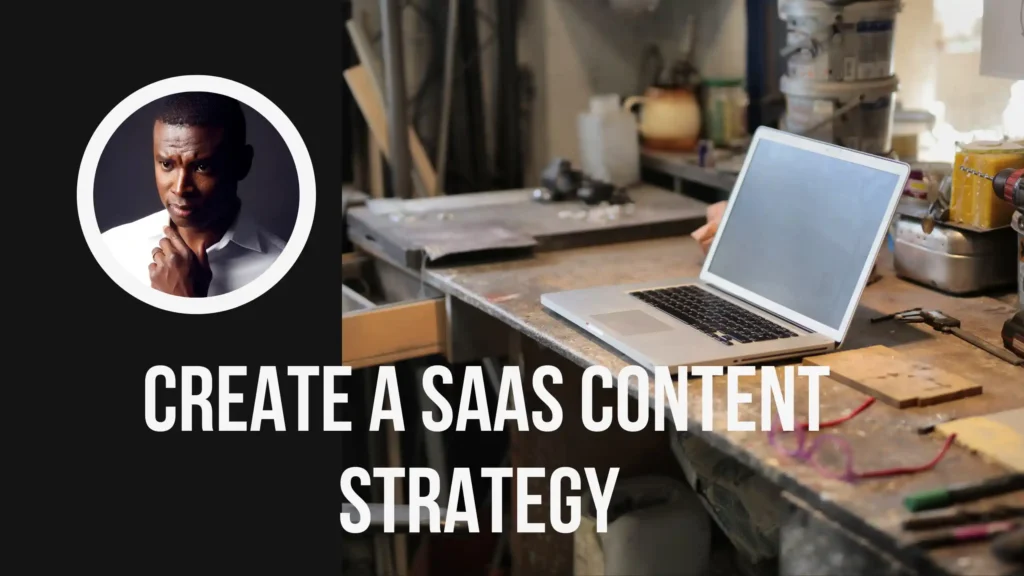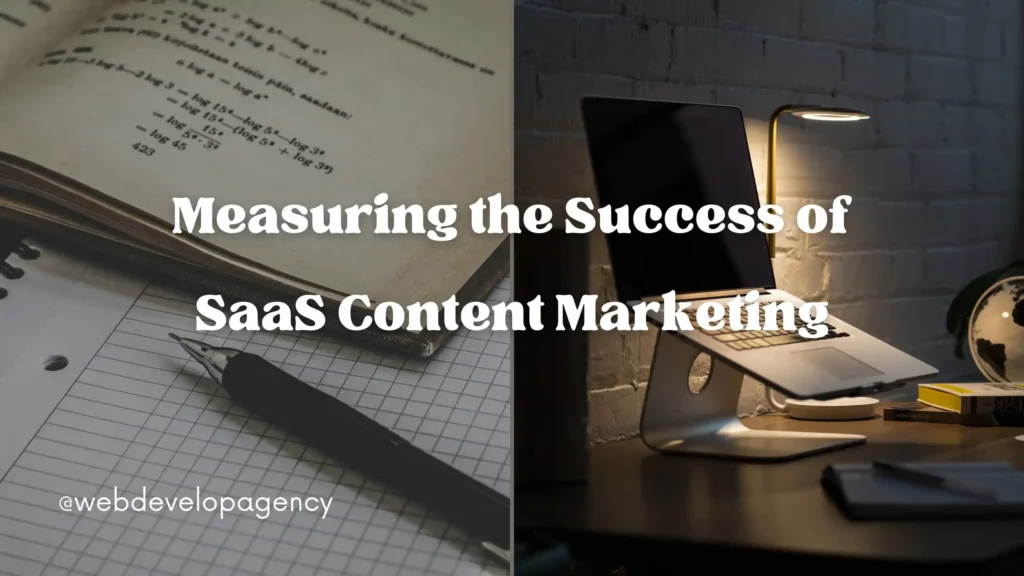Discover the best practices for developing a fruitful content marketing plan for your US-based SaaS company. Everything from identifying your target audience to producing and sharing useful content is covered in this tutorial. Anyone interested in learning more about SaaS content marketing may use The Ultimate Guide to SaaS Content Marketing in the US as a thorough reference.
It covers all the essentials, including what SaaS content marketing is and why it’s crucial, how to develop a SaaS content strategy, the many forms of SaaS content, and how to disseminate your material to your target market. The course also covers how to assess the effectiveness of your SaaS content marketing initiatives. Anyone working on promoting a SaaS product or service will find it a useful tool.

What exactly is SaaS content marketing?
SaaS content marketing is a long-term marketing approach that uses many sorts of content, including blog posts, white papers, case studies, videos, and infographics, to draw in, hold the attention of, educate, and turn prospective customers into satisfied ones. The key objective is to develop a hub of resources around the product and draw the appropriate clients naturally without paying for promotion. SaaS content marketing is a potent tool for B2C and B2B organizations to increase brand recognition, get more organic search traffic, and keep a well-defined target demographic.
Why does SaaS content marketing matter?
SaaS content marketing is crucial since it helps promote your product as a remedy for the problems experienced by your target audience. It also helps you develop a brand identity and recognition, draw in the correct audience, increase consumer interaction, and position yourself as a thought leader. SaaS businesses should develop naturally and have a solid reputation and base of trust. Building a devoted community, establishing your brand as a thought leader, and creating a steady income stream all depend on the quality of the material you provide for your audience.
What advantages can SaaS content marketing strategies provide?
The advantages of SaaS content marketing include the following:
- Generating steady and significant traffic to your SaaS site.
- Making it search engine friendly.
- Helping with link building and mentions.
In addition, it may make a brand more visible, boost lead generation, highlight the special qualities and advantages of a business’s goods or services, and make it simpler to draw in and convert new clients.
For whom is this guide intended?
This manual is intended for anybody interested in learning more about SaaS content marketing and how it may help their company. People who are active in the marketing of SaaS products or services will find it very helpful. This book will provide insightful analysis and practical advice to help you succeed, whether you are new to SaaS content marketing or a seasoned marketer trying to enhance your approach.
Chapter 1: Create a SaaS Content Strategy

Step 1: Determine your target market
Identifying your target audiences is the first step in developing a SaaS content strategy. That entails figuring out who will most likely be interested in your product or service. Making up fictitious profiles of your ideal clients, known as buyer personas, can help you achieve this. Age, gender, location, work title, income, and hobbies should all be included in these personas.
Step 2:Pinpoint your pain locations
Finding their pain points comes after you have established your target market. These are the issues or difficulties that your target market is dealing with, which may be resolved with your product or service. You can conduct surveys, interviews, or focus groups with your target audience.
Step 3: Determine your keywords
Finding the relevant keywords that your target audience is using to look for the answers to their issues comes after you have determined the difficulties that they are having. Use SEMrush or the Google AdWords Keyword Planner to do this study utilizing keywords.
Step 4: Establish your campaign’s objectives and metrics
Specifying your campaign objectives and analytics is the next stage in developing a SaaS content strategy. To do this, you must decide what you want your content marketing efforts to accomplish and how you will evaluate their success. Increasing website traffic, generating leads, or enhancing client involvement can be some of your objectives.
Step 5: Develop your content development processes
The next stage is to build your content creation methods once you have established your campaign objectives and analytics. It entails making choices about the kinds of material you’ll produce, how often you’ll release fresh information, and who will be in charge of writing and producing the content.
Step 6: Describe your distribution plan
The last stage in developing a SaaS content strategy is to describe your distribution plan. To reach your intended audience, you must decide how to disseminate your material. You may use strategies like paid advertising, email marketing, and social networking to promote your material.
Chapter 2: Types of SaaS Content

- Blog Posts: A material called a blog post is posted on a company’s blog. They serve as a way for companies to communicate news, updates, and insights with their audience since they are often shorter than whitepapers or ebooks.
- Whitepapers: Whitepapers are extensive studies providing in-depth information on a subject. Usually, they serve to inform the reader on a certain subject or provide a resolution to a problem. Whitepapers and blog posts are shorter than ebooks, designed to give thorough information on a specific subject. They may be used to inform the reader or to provide a thorough walkthrough on how to handle a specific issue.
- Case studies: These are in-depth examinations of how a business has aided a client in resolving a specific issue. They serve as social proof for prospective clients and a means of showcasing the advantages of the company’s product or service.
- Webinars: Webinars are presentations provided online, either live or recorded. They may be used to instruct participants, educate the audience on a certain subject, or show off the qualities of an item or service.
- Information graphics: Information graphics are visual displays of data or information. They are used to convey complicated information in a manner that is simple to comprehend.
- Videos: Material videos may be used to educate, amuse, or enlighten the audience. They may provide client testimonials, give training, or show off a product’s or service’s characteristics.
- Podcasts: A podcast is a digital audio it may be downloaded and played anytime. They may communicate information such as news, analysis, and expert interviews.
Chapter 3: Making Your SaaS Content Available

An organic search: Your website and content must be optimized for organic search. By doing this, you may improve the visibility of your content and drive more natural traffic to your website.
The social media: You may share your material and interact with your audience via social networks like Facebook, Twitter, and LinkedIn. You may add links to your blog articles, whitepapers, and other information on your social media accounts to increase traffic to your website.
Marketing through email: Sending personalized emails to your subscribers helps you promote your content and to interact with your target audience. Email marketing may provide links to your subscribers’ most recent blog articles, whitepapers, and other information.
Blogging by guests: Guest blogging entails creating and posting content on websites belonging to your sector. It may improve the accessibility of your information and draw more people to your website.
Syndicating content: Republishing your work with permission on other websites is known as content syndication. It may improve the accessibility of your information and draw more people to your website.
Advertising that is paid per click: Pay-per-click (PPC) advertising includes putting adverts for your content on search engines or social media websites. A cost-effective method of increasing traffics to your website; you only pay when someone hits on your advertisement.
Chapter 4: Measuring the Success of SaaS Content Marketing

- Traffic: Monitoring website traffic is one method to gauge how well your SaaS content marketing works. It covers statistics like the volume of visitors, average number of page visits, and bounce rate. By looking at these measures, you can assess how well your content is in drawing in and keeping readers.
- Leads: Counting the leads your content has produced is another approach to gauge the effectiveness of your SaaS content marketing. It covers fill quantity, email signups, and phone calls. By looking at these measures, you can assess how well your content works to produce leads for your company.
- Sales: These are another way to gauge the effectiveness of your SaaS content marketing efforts. You can do this by keeping tabs on how many sales your content has led to. It covers revenue, average order value, and the number of orders. You may evaluate these data to ascertain how well your content promotes sales for your company.
- Brand awareness: Tracking changes in brand awareness is another technique to evaluate the effectiveness of your SaaS content marketing. Metrics like brand recall, brand awareness, and brand emotion fall under this category. You may evaluate these indicators to see how well your content is doing to raise brand awareness.
- Customer satisfaction: As a last check, you may monitor changes in customer satisfaction to assess the effectiveness of your SaaS content marketing. Customer lifetime value, retention rate, and net promoter score are a few examples of these measures. By looking at these measurements, you may ascertain how well your material is doing in terms of raising client satisfaction.
Conclusion
The fundamentals of SaaS content marketing, including what it is, why it matters, and the advantages it may provide, have been explored in this tutorial. Finally, we discussed how to evaluate the effectiveness of your SaaS content marketing initiatives.
We invite you to read on and research this subject more if you’re curious to learn more about SaaS content marketing and how it may help your company. Online, numerous sites may provide help and extra information. To build and carry out a successful SaaS content marketing plan, consider partnering with a qualified content marketing firm.


Leave a Reply